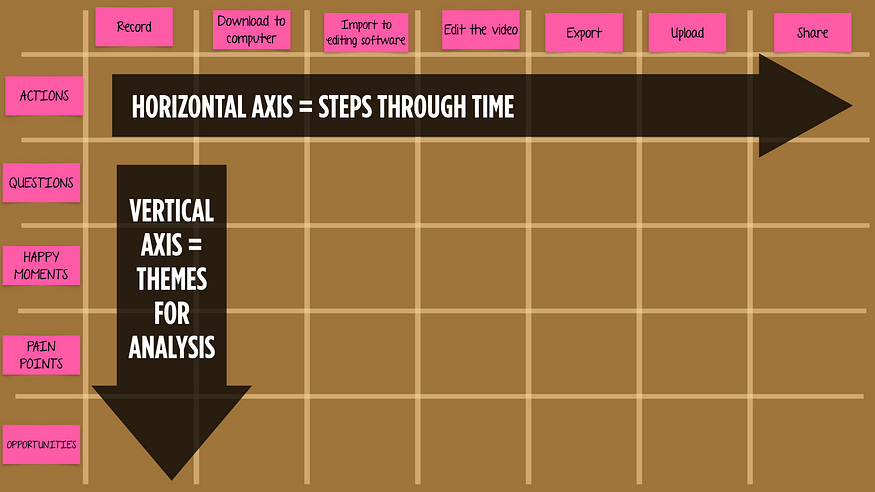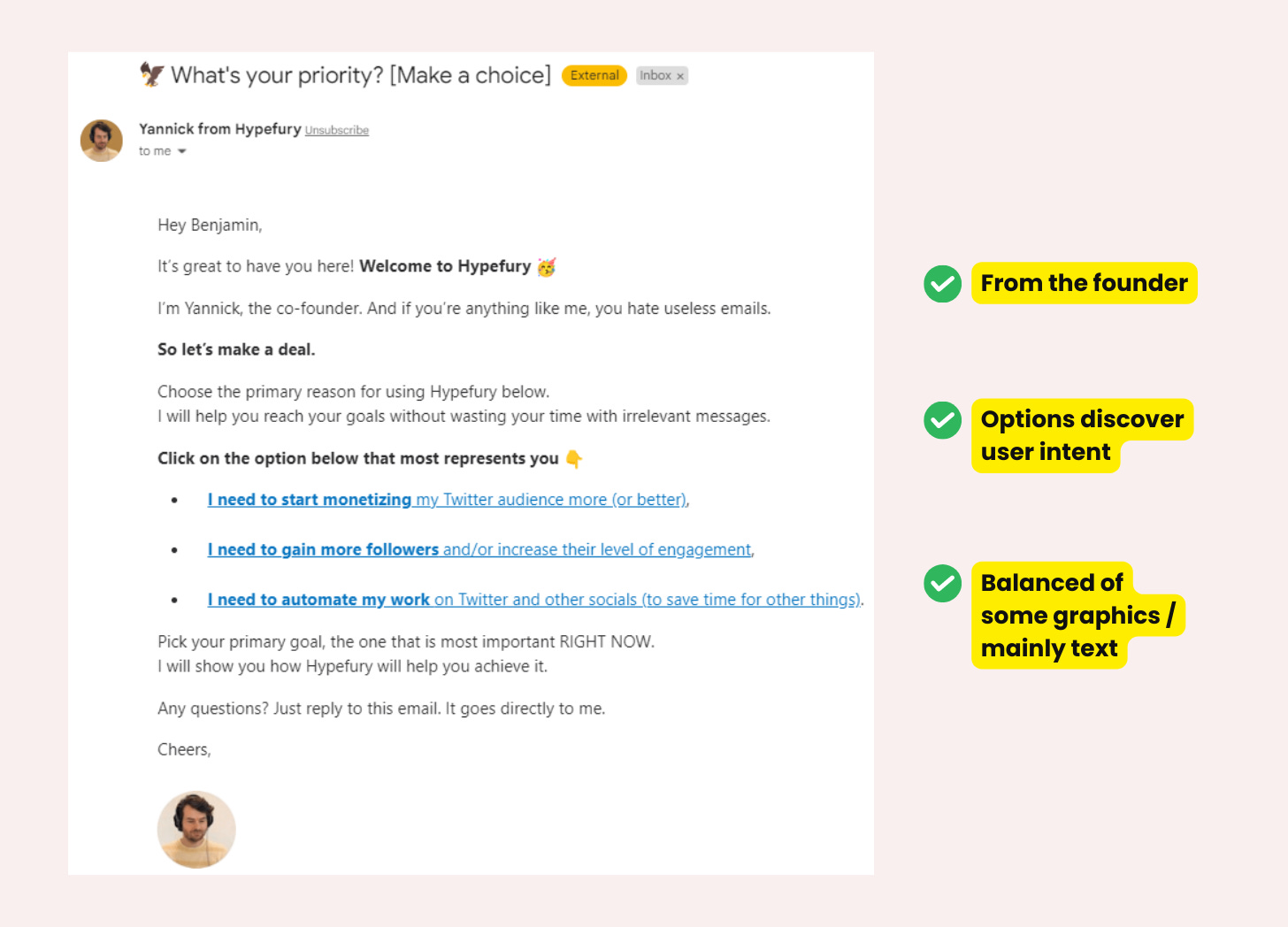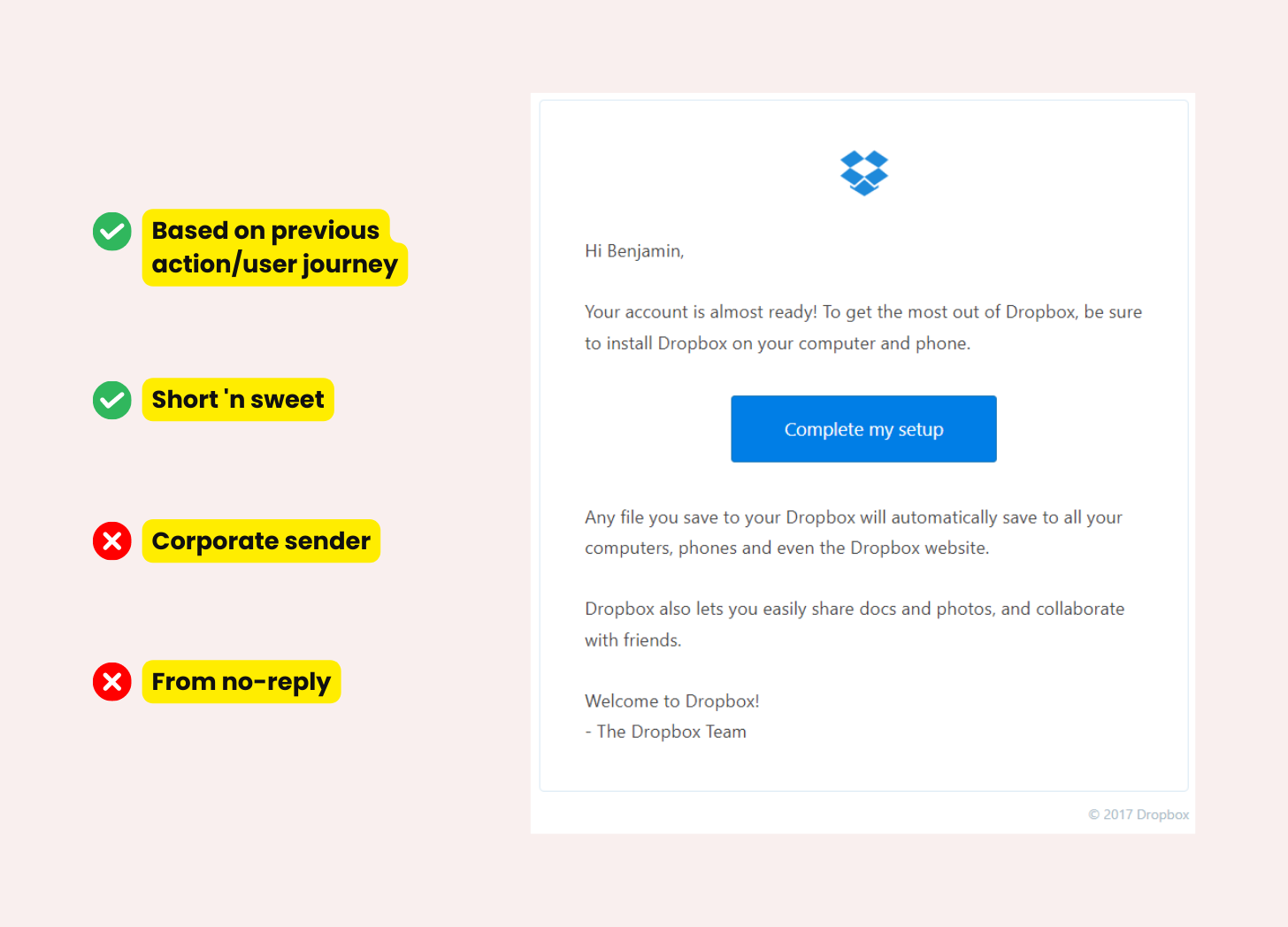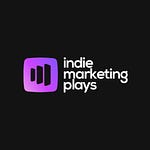This is why I love doing interviews on Substack.
I got to ask
everything about building out a solid SaaS onboarding sequence, including:The 3 part foundational setup
Design and copy tips, as a founder and marketer
A performance review checklist for onboarding champions
As co-founder of Userlist, a B2B SaaS email platform, Jane has been deep in email sequences for products for a long time, and shared generously based on this experience.
Listen to the discussion or review the summary write-up below:
Important note: The following is a summary written by me based on what Jane said, but is not a direct quotation. Please listen to the audio version for Jane’s exact wording.
How to create your first onboarding sequence
Overall, the process of setting up your first onboarding campaign can be done in three main steps:
Move from hardcoded messages to an email platform. Any platform will do. But you can't be relying on hard-coded emails. You will need to have more flexibility to create, iterate and send emails without needing to work with a developer.
Set up data integrations to identify user behavior. You will need to understand user behavior in real-time In the form of event and user properties. This information can't be uploaded via spreadsheet again and again, it needs to be a dynamic record. More details on how to work out what metrics you need to integrate are below.
Create emails and iterate content. Now you can create the first round of emails in your onboarding sequence. How many emails you create is based on the user journey. And as you create more helpful content, you can add more over time, then review and iterate your content for accuracy and performance.
Don't underestimate the psychological barrier. Be wary of having a perfectionist mindset, stopping yourself from starting or improving what you have. Similarly, don't let the fear of mistakes with automation hold you back either.
Identify needed user behavior data

Planning and understanding what user data you need to bring over will help make sure that the integration is organized (and that you don't have to keep bothering the dev team).
👉 Use journey mapping (example above) to work out what steps a user takes, and what data you will need in order to understand your user’s stage in their journey.
You are looking for event and user properties that help you understand the life cycle and success of users.
Examples:
Trials to paid users. Track the billing state for each user so that you can identify paying users versus non-paying.
User engagement. For a photo editing app, you might track the number of photos added and exported to identify whether a user has engaged with the application.
Sidenote: Make a segment in your email marketing platform for tracking who is on your onboarding sequence so that you don't message them with updates or other marketing emails while they are in that process.
Email content
Overall, you want to use these emails as if you were a customer success agent checking in and promoting people's progress through your Product.
👉 Use your emails to offer help, tutorials, etc to get people engaged with the next step you want them to take in their user journey.
Plain text vs designed
This is opinion only, but the suspicion is that short and plain text emails have a better chance to be read.
There is an argument to be made that well-designed emails show that you have a polished, well-made product but the right balance is probably somewhere in the middle.
The ‘from’ sender
It is well documented that having the from sender be a person at your company, such as Jane from Sparkle, something that puts a person behind the message.

Personalization
You need to go beyond using a merge field for the receiver's name to do good personalization.
Talk to an individual user’s problems/objectives. The email content should address problems that they are struggling with, or objectives they're trying to achieve. Think of onboarding as multi-modal, some like demo, videos, etc, that let people choose their own adventure.
Put the user into a segment. Take advantage of tools (example below) that can help you better understand your website visitors, and their background so that you can place them into the right buckets and deliver relevant messages.
Base emails off their previous action. In some cases, the user’s previous action, such as editing a photo, or uploading a list, can serve as a useful inspiration to guide the purpose of the next email. For example. If a user downloads a cheatsheet, you can reference it in the following email.
💡 Tip: Don’t send a welcome email immediately upon signup because they’ll be in the app and it can distract them. Send it after a few hours.
Benchmarking
Be careful assuming that other products are doing it better.
Sometimes email sequences from mature companies no longer make personal connections like they once did, and wouldn't be useful for the purposes of benchmarking.
But it can still be an interesting exercise. Check personal brands for emails that are typically more engaging. “Steal like an artist.”
Key mistakes
There are a few common mistakes to look out for:
You’re never finished. Programming the first set of emails in your onboarding sequence is just the start. You have to keep updating and iterating the content.
Email frequency. The optimal email frequency is hotly debated. Some argue that you should send every day, others argue that you should send only when you have something very important. The balance is likely in between.
This will likely change over time based on the maturity of your product. For example, you may begin by emailing updates for every new feature, but this may become too frequent and lead you to batch them into newsletters.
One tip to avoid over-emailing is to orchestrate your sends by the day of the week for. For example, remove Tuesdays and Thursdays from any programmed automated emails so that you can send newsletters or other planned broadcasts on those days and avoid doubling up.
Be careful of being too aggressive. It is a mistake to pitch users to convert to paid plans to those who have not yet started using their accounts.
Measurement and evaluation
Truly objective performance evaluation is difficult since you would need to compare cohorts of users who receive the onboarding messages versus those who didn't. But this is not practical.
👉 Instead, evaluate your onboarding sequence as a growth tool. Pick a north-star KPI to measure performance against.
For example, # of demo requests. Or the # of users converted in the first 24 hours. Etc.
In the ideal world, you would designate a user onboarding champion who is responsible for user activation success across multiple channels.
📝 Review checklist:
Here are 3 items that they would review, at least on a 6-month basis.
Signup flow accuracy. Is the information provided on how to use the product still accurate given any updates that have come through?
Open rate disparity. Are some emails getting drastically lower open rates compared to the others, that need to be investigated in order to be improved?
Opportunities to add more content. Have you recently created new, helpful information that can be added to provide more guidance to the user?
Learn more
To learn more about Userlist, or connect with Jane, see the list of links below:
Userlist - Jane’s B2B SaaS email and messaging platform.
Better Done Than Perfect - Jane’s B2B SaaS Podcast.
Userlist blog - SaaS-specific email guides.
If you've discovered my marketing case studies, analyses, and interviews for the first time, please consider subscribing to be notified of the next one. Click the button below, and check out a list of my other pieces here.













How to Create Your First SaaS User Onboarding Sequence | Jane Portman, Userlist